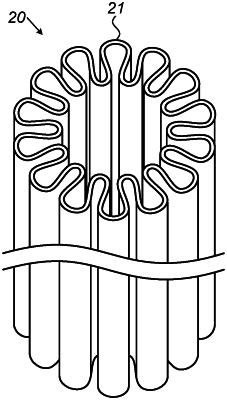| CPC A61B 17/0218 (2013.01) [A61B 17/02 (2013.01); A61M 29/00 (2013.01); A61M 29/02 (2013.01); A61B 2017/00557 (2013.01); A61B 2017/00831 (2013.01); A61B 2017/0225 (2013.01)] | 17 Claims |

|
1. A dilator device for insertion into a minimally invasive incision aperture made in a tissue, the dilator device comprising:
a longitudinally elongated structure having an annular wall that expands under application of an externally applied outwardly directed mechanical force from a radially collapsed state to a radially expanded state when the externally applied outwardly directed mechanical force is applied to the annular wall from within the structure, such that the annular wall of the structure enlarges the minimally invasive incision aperture,
wherein the radially collapsed state and the radially expanded state are bistable mechanical equilibrium states having local minima of potential energy separated by a local maximum which is not an equilibrium position, the potential energy of the radially expanded bistable state being sufficiently less than the local maximum potential energy that, when the mechanical force is relaxed after insertion of the structure into a tissue of a subject, the annular wall remains in the radially expanded state, and
wherein the structure in its collapsed state has, in a longitudinal direction, a mechanical stiffness that enables the device to be pushed into the minimally invasive incision aperture made in the tissue.
|